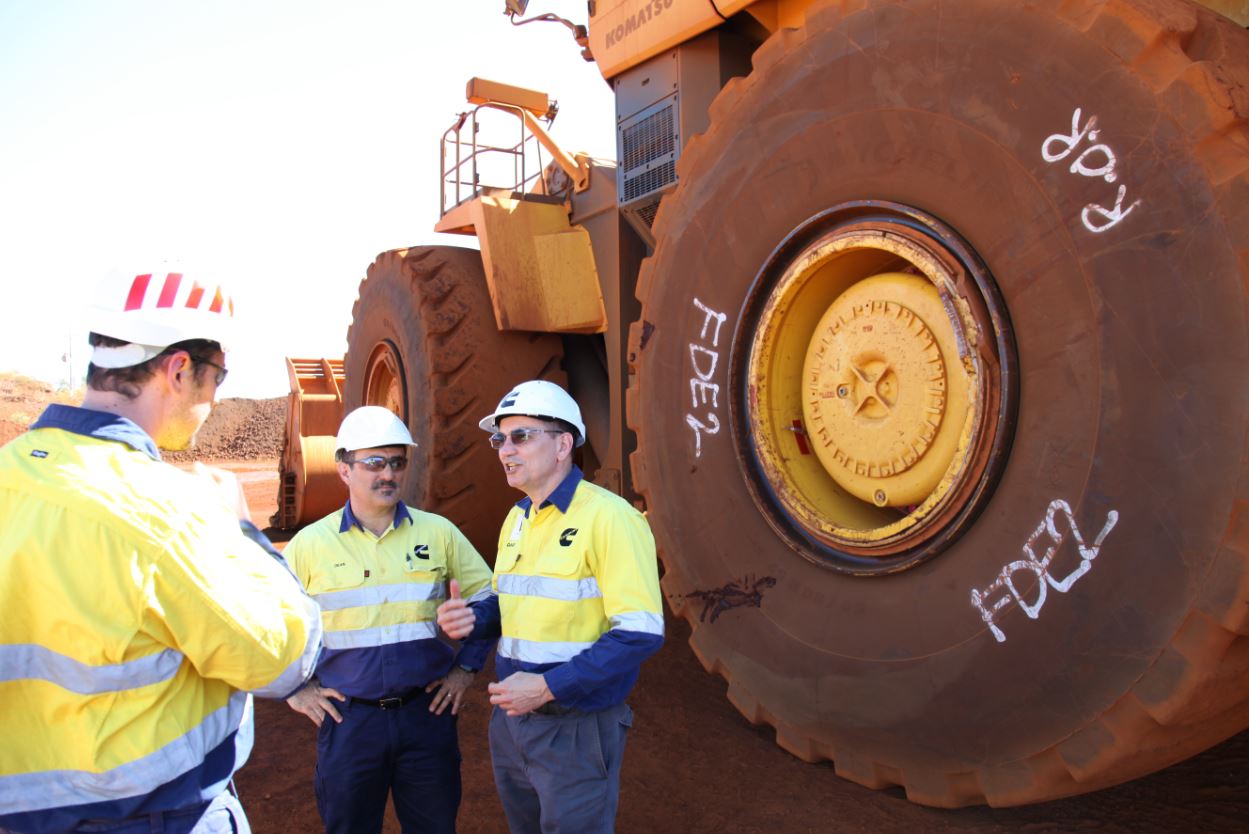When Rio Tinto looked to improve life-to-overhaul of the Cummins QSK60 engine powering its Komatsu WA1200-6 loaders, oil filtration efficiency emerged as the key.
Rio Tinto has nine 220-tonne, 1892 hp WA1200-6 loaders operating in its vast iron ore operations in the Pilbara, Western Australia, where production reached 330 million tonnes from 16 mines in 2017.
A world-first WA1200-6 is working at the Mesa J mine in Rio Tinto’s Robe Valley Operations – the first equipped with an engine-mounted Cummins Eliminator oil filtration system that replaced the engine’s standard remote-mounted four spin-on filters.
“Eliminator had never been fitted to a WA1200 loader before, so we engaged Cummins and Komatsu to scope out what was needed for the job,” says Hugh Carlisle, Specialist Engines for Rio Tinto’s Asset Management & Engineering Services, HME Engineering team.
EXPLORING FILTRATION EFFICIENCY.
The decision to install the Eliminator system was the result of a major project carried out by Rio Tinto and Cummins on QSK60 engines, exploring filtration efficiency.
“We were interested to know what we could do with filtration to improve engine life so we worked with Cummins on the project, studying the condition of 24 QSK60 engines in both our iron ore and coal operations that had achieved full life with Eliminator and with standard spin-on filters,” Carlisle points out.
“Our analysis determined that the Eliminator system would give us a 20 percent increase in engine life based on fuel burn, leveraging reduced flow restriction and improved filtration efficiency.”
Rio Tinto is now targeting a life-to-overhaul of 21,000 hours with its Eliminator-equipped QSK60 MCRS engines in the Komatsu loaders – MCRS indicating the high-pressure modular common rail fuel injection system which is a key element in the miner’s technology roadmap.
Without Eliminator and revised engine software to improve fuel consumption, targeted life for the MCRS engine in the WA1200 has been 16,000 hours.
“Eliminator is a natural fit in the WA1200,” says Carlisle. “It sits right behind the service access panel so maintainability of the machine is significantly improved.” Rio Tinto has also adopted the disposable Eliminator centrifuge cartridge, significantly reducing service complexity, cost and downtime.
REDUCING LIFE CYCLE COSTS.
Achieving the lowest possible fuel consumption is another key element of Rio Tinto’s technology roadmap to reduce life cycle costs. Hugh Carlisle points out that the 1892 hp QSK60 MCRS engine in the Komatsu WA1200-6 features fuel/emissions optimised engine software, providing a four percent fuel consumption benefit compared with the standard Tier 2 engine software.
The focus on fuel efficiency at Rio Tinto isn’t surprising considering that diesel is currently being used at a rate of 850 million litres a year in its Pilbara iron ore operations, 63% of which is consumed by heavy mobile equipment – haul trucks, excavators and loaders.
Another change that has occurred concurrently with the Eliminator installation is the fitment of dual 19 kg Prestolite starter motors, replacing the standard starter motors that weighed 35 kg. The key benefit is safety in that the lighter Prestolite units are far easier for a mechanic to replace.
All of Rio Tinto’s nine WA1200-6 loaders have subsequently been upgraded and operating at five mine sites across the Pilbara.
PrevenTech used to extend oil and filter life while ensuring engine health.
PrevenTech’s advanced analytics helped identify root causes of slow speeds and recommended optimized maintenance actions.
PrevenTech’s predictive analytics detected early signs of injector wear to help prevent injector failures.


